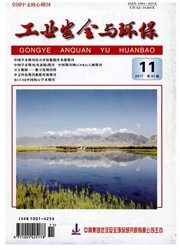

 中文摘要:
中文摘要:
依据人因可靠性原理、事故致因理论,结合煤矿生产系统的特点,提出了观测可靠度的概念,确立了一系列便于统计和赋值的人因可靠性评价指标。针对人因失误事件过程的动态性、复杂性以及数据的不完整性,利用 BP 神经网络对非线性动态系统的自学习性和自适应性的特点,建立了基于 BP 神经网络的煤矿作业人员人因可靠性评价模型。运用Levenberg-Marquardt 算法改进的 BP 神经网络,克服了收敛速度慢,容易陷入局部极小点的缺点,提高了预测精度和稳定性。对于岗位工龄短或有效记录不足的煤矿作业人员,采用 BP神经网络模型进行了人因可靠性评价。评价结果表明,基于 BP 神经网络的煤矿作业人员人因可靠性评价方法具有较好的适用性和可行性。
 英文摘要:
英文摘要:
Based on principles of human reliability and accident-causing theory,combining with characteristics of coalmine production systems,the concepts of observed reliability are proposed,and a series of human reliability evaluation indices facilitated to statistics and assignment are established. According to the dynamics ,complication of accidents process and data imperfection of human errors, a human reliability evaluation model of coalmine workers based on BP neural network is proposed considering about self-learning and adaptive characteristics of BP neural network to non-linear dynamic systems.The optimized BP neural networks with Levenberg-Marquardt algorithm can overcome the defects of slow convergence speed and prone to falling into local minimum,improve the prediction accuracy and stability.For coalmine workers with short job seniority or insufficient job record,the human reliabilities are evaluated applying BP neural network model.The evaluation results show that the human reliability evaluation method of coalmine workers based on BP neural networks has commendable applicability and feasibility.
 同期刊论文项目
同期刊论文项目
 同项目期刊论文
同项目期刊论文
 期刊信息
期刊信息
